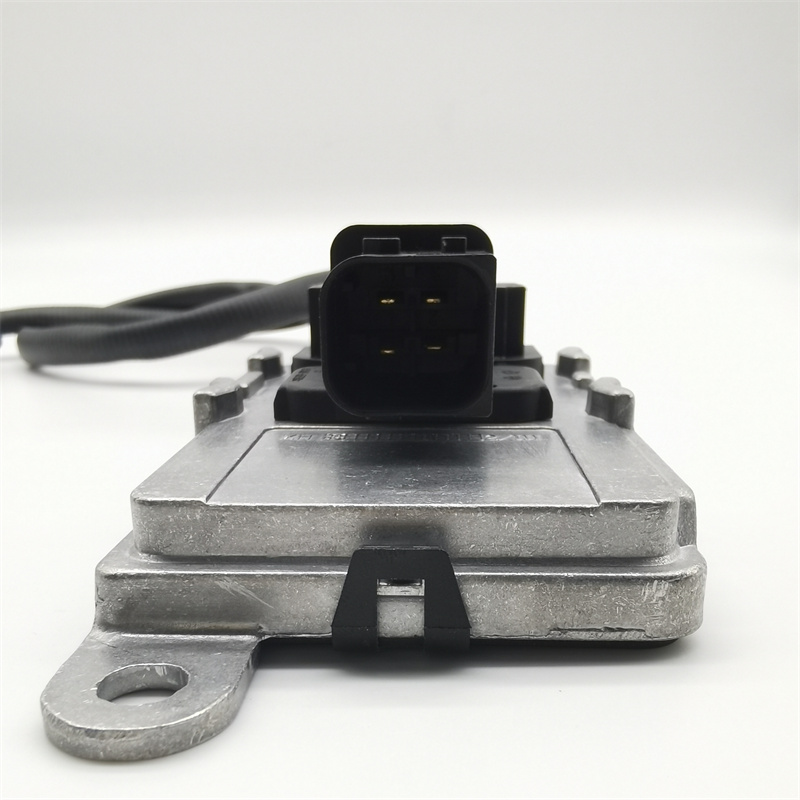If your car's NOx sensor is failing, it could be for a variety of reasons.
If your car’s NOx sensor has failed, it can be for a variety of reasons. Here are the top 8 causes of NOx sensor failure that you should know. 2018 Duramax Nox Sensor

Car manufacturing is one of the most resource-intensive industries. Motor vehicles, especially older models, also contribute to air pollution via their exhaust systems. Besides hydrocarbons, methane, and carbon monoxide, these machines also emit nitrogen oxides or NOx.
Some modern cars running on diesel engines are equipped with devices to meet more eco-friendly standards. One such device is called a NOx sensor. This tool is installed on a vehicle’s exhaust system before the catalytic converter, another car part that converts pollutants to safer gases.
But like other car parts, these sensors aren’t invincible. So how does a NOx sensor work, and why do these car parts fail? Let’s find out in this article.
The automobile industry is continuously making modern vehicles better and more sustainable in several ways, including enhancing their diagnostic capacities. Nitrogen oxide sensors are installed in cars to measure the NOx levels accurately. These devices can also detect oxygen concentrations and exhaust flow masses.
When a sensor identifies high levels of nitrogen oxides, it activates an electrode that contains materials that react with NOx. In some cars, these sensors can adjust the fuel mixture and valve timing through the selective catalytic reductor (SCR), which reduces harmful compound emissions.
The driver will likewise be alerted of high NOx emission levels on a specific car’s display board. If your vehicle displays this warning without getting turned off, there could be a problem with the NOx sensor. You can read here to learn more about NOx sensors.
As with other car parts, NOx sensors aren’t invincible and have a certain shelf life. Figures vary, but some sources indicate these devices can withstand 2,000 hours or up to 60,000 miles of use. Improper use and external factors can shorten its lifespan, including:
As with other electricity-driven devices, the NOx sensor needs wires and cables to keep it working. If you suddenly find your newly-bought sensor isn’t working, check the wire connectors for damage, as NOx malfunction cannot work without proper internal connectors.
High-quality NOx sensors are made to withstand high temperatures and are placed near the exhaust. However, if you expose the vehicle to rainy or snow-filled roads, where it can get damp and cold, the temperature drop can cause thermal shock and damage the sensor.
As a road warrior, your car is exposed to elements, including dirt, which can accumulate if you fail to clean it properly. When left for too long, soot and dirt can find their way near or into the sensor, causing it to malfunction. Hence, it will display a perpetual error code on your diagnostics board instead of detecting nitrogen dioxide emissions.
Additionally, using enriched diesel fuel may accelerate soot buildup in your vehicle and NOx sensor probe, making it unable to measure exhaust gases correctly and eventually leading to sensor damage.
Besides soot, water buildup and condensation on the sensor can damage its board and render it unusable. If your vehicle is frequently exposed to water, the different parts of the sensor may get corroded, especially the plug. In worse cases, the internal components may get soaked for long periods and need to be replaced.
Besides water, other fluid types like unburned fuel and oxygen can mix in your exhaust system, leading to more dangerous problems like engine trouble. Nevertheless, the fluid that forms near your exhaust system can easily find its way onto your NOx sensor and damage it.
The same applies when using too many engine additives. With all the hype about different performance-enhancing fluids, drivers are often lured into using them to save fuel, clean the valves, or boost power. Unfortunately, such additives may damage the injector and your NOx sensor, leading to more serious problems.
By their very nature, sensors are sensitive machines. NOx sensors, for instance, are thin, and any impact can cause them to malfunction. A forceful blow can cause great damage to it.
It’s best to be mindful and avoid hitting on rocks or other solid objects when driving through difficult terrains and rocky roads.
A new original equipment manufacturer (OEM) NOx sensor can cost hundreds of dollars. This can be a significant purchase, considering you must replace the device every few months. Cost-saving can drive some vehicle owners to use cheap replacement parts when the sensor fails. Purchasing a NOx sensor from reliable suppliers is the best option to avoid bigger problems.
As mentioned, NOx sensors have to be replaced during certain periods. No matter how diligent you might be in sending your vehicle for preventive maintenance checks, you will need to replace the sensor at some point.
These are a few of the common reasons for NOx failure. Depending on the cause, a problematic sensor can be addressed by cleaning it or checking the connectors and wires. If these measures don’t work, it’s best to have qualified specialists repair and replace the unit if necessary. It also helps to have periodic sensor functionality checks to ensure you get the most value out of the device.
The adoption of construction simulation software represents a significant stride toward making construction projects more efficient, accurate, and cost-effective
Online casinos can be a lot of fun. They're convenient, provide an excellent place to play games you love
Lighting towers are the linchpin of successful nighttime engineering projects, showcasing their indispensability across various dimensions, from safety to environmental sustainability
Embarking on a journey through unconventional PhD programs can be an enriching experience, enabling engineers to transcend traditional boundaries and embrace interdisciplinary innovation
The melding of biotech and engineering embodies the spirit of innovation and collaboration

P229e11 Mercedes Biopharmaceutical companies must stay at the forefront of these engineering advancements to remain competitive and, more importantly, to fulfill their mission of improving the quality of life